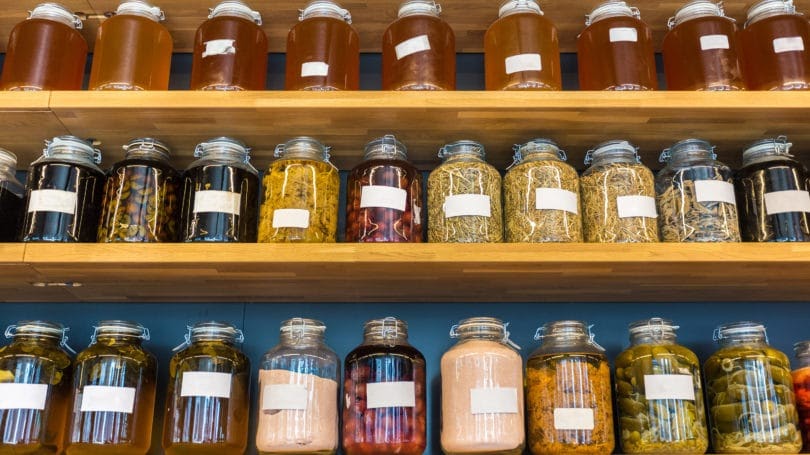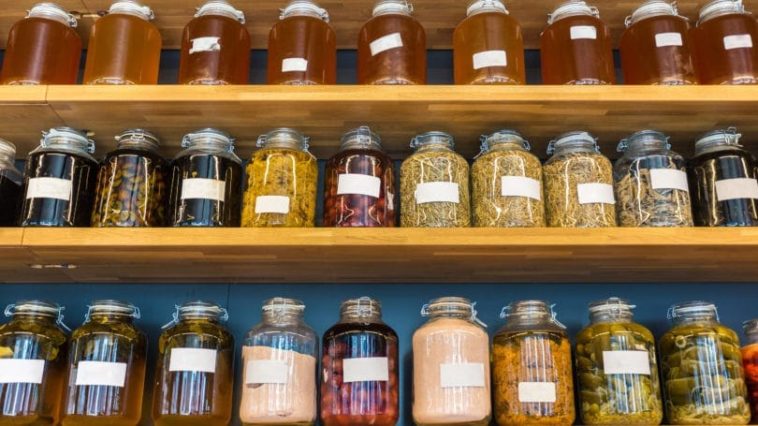10 Ways to Prepare for a Coronavirus Second Wave
When the COVID-19 pandemic hit, many people scrambled to stock up on food and supplies and cope with virus-related unemployment and quarantines. We experienced firsthand the stark reality of empty grocery store shelves, lengthy school closures, and months stuck at home.
All of us are ready for the pandemic to be over so that we can get back to normal life — though many pandemic-created changes may be permanent. But all our wishful thinking won’t change reality. COVID-19 is currently surging in the United States, along with many other countries around the world. And knowing how to weather this winter surge is key to keeping your family safe and healthy.
The COVID-19 Winter Surge
There’s no doubt the United States is experiencing a winter surge in coronavirus cases. According to the COVID Tracking Project, the week of Dec. 2 through Dec. 9, 2020, broke records in all three metrics used to measure the pandemic’s severity: new cases, current hospitalizations, and daily deaths. On Dec. 13, 2020, the U.S. surpassed 16 million cases.
In a livestreaming presentation on Dec. 2, 2020, hosted by the U.S. Chamber of Commerce Foundation, CDC Director Dr Robert Redfield said he believes December, January, and February will be the most difficult time in the nation’s public health history. Modeling by the Institute for Health Metrics and Evaluation (IHME) projects 502,256 deaths in the United States by April 1, 2021. The IMHE is also predicting the pandemic’s peak, in terms of daily new infections, around the middle of January, 2021.
It’s a bleak assessment of how the United States has, so far, handled the pandemic. However, there is good news. On Dec. 11, 2020, the Food and Drug Administration issued an emergency use authorization for the first COVID-19 vaccine. The vaccine, developed by Pfizer, provides some hope that the pandemic will come to an end. But reaching that end will take time. State officials will give priority to health care workers and long-term care residents. Healthy adults will likely not be able to get a vaccine until May or June 2021.
According to CNN, the White House coronavirus task force has warned a vaccine won’t significantly slow the spread of the virus until at least late spring. Which means personal behaviors such as wearing a mask, hand washing, and social distancing are still essential to stay safe. On Dec. 9, 2020, Dr. Anthony Fauci, director of the National Institute of Allergy and Infectious Disease, spoke at an online event sponsored by the Harvard T.H. Chan School of Public Health called “When Public Health Means Business.” His prediction was that if the vaccine rollout is successful, we might experience some degree of normality by Fall 2021.
Even then, however, we might not be finished with COVID-19. According to the CDC, researchers currently don’t know how long a vaccine will provide immunity from the virus. And if many Americans refuse to get the vaccine entirely, the virus will still circulate freely and prolong the pandemic. An April 2020 report by the Center for Infectious Disease Research and Policy (CIDRAP), the COVID pandemic is likely to last 18 to 24 months. It might also come in the form of several waves of varying intensity.
In the report, CIDRAP used past pandemics’ behavior to outline three possible scenarios for the future of this one. Scenario 2, based on the behavior of the 1918 Spanish influenza pandemic and the 1957 influenza pandemic, predicts a much larger, more severe wave for the fall and winter, with several smaller waves occurring throughout 2021.
Of course, so far, the coronavirus is not following any predictable pattern. In a June 2020 interview on NBC’s Meet the Press, Michael T. Osterholm, the director of the Center for Infectious Disease Research and Policy at the University of Minnesota, says it is more accurate to compare the pandemic to a forest fire rather than oncoming waves. We can slow it down in some areas, but it will continue to burn in others as long as there is wood.
Although no one can predict how severe the winter surge will be in the U.S., preparing for the difficult months ahead can help you feel more in control in an out-of-control situation. It can help ease any anxiety or stress you feel about the future and give you peace of mind that you and your family will have what you need if you’re quarantined again or experience food supply disruptions. It can also help you save money in the long run if you stock up on supplies slowly, protecting yourself from possible price spikes or inflation.
Getting Through a Coronavirus Second Wave
If there’s any silver lining to the COVID-19 pandemic, it’s that we now have some experience with the reality of living through one. And that makes getting through a second wave a little bit easier. There are several things you can do now and in the coming weeks to get through the winter surge.
1. Stock Up on Food
Stop and think about all the items you couldn’t find when people began panic-buying in March and April. Some products that disappeared from store shelves include:
Some these foods might be hard to find in the coming months, especially if your state issues lockdown orders. It’s smart to start stocking up as they become available. Do what you can to start building a long-term food pantry for your family and stock up on what you need.
In a CNN interview, Fauci said Americans would need to “hunker down” this fall and winter to prevent the virus’ spread.
One way to do that is to keep enough food on hand that you only need to visit the grocery store every week or two. While that involves careful meal planning, it could be a valuable strategy to keep your family protected and healthy this winter.
However, if your grocery budget is already stretched thin, that’s easier said than done, especially since food prices have gone up during the pandemic due to supply issues and processing plant closures. Stores have also reduced sales, discounts, and coupons because, with so many people spending extra money at the grocery store right now, they don’t have to work as hard to entice people to buy. That makes it even more vital you learn strategies to save money on groceries.
To save money, try shopping at discount grocery stores like Aldi or Shop ’n Save. You can also save money by buying in bulk at stores like Costco or Sam’s Club. And don’t forget about using smartphone apps like Ibotta and Fetch Rewards to save even more.
Another way to save money stocking up on food is to buy in bulk at your local farmers market and start home canning. Home canning is an affordable way to preserve seasonal produce or fresh foods you find on sale. You can also preserve your farmers market finds by using them to make freezer-ready meals.

2. Stock Up on Supplies
Hand sanitizer is another product that disappeared during the first wave. Some stores are slowly getting sanitizer back in stock. However, it might be more expensive than it used to be due to increased demand.
You can save money by making homemade hand sanitizer. However, the critical ingredient, rubbing alcohol, is still hard to find in some parts of the country. If it’s available in your area, grab an extra bottle or two to have on hand.
It’s also a good idea to stock up on other supplies that were hard to find during the first wave of the pandemic. These supplies include:
- Toilet paper
- Paper towels
- Cleaning supplies like disinfectant spray (like Lysol), bleach, and sanitizing wipes (such as Clorox wipes)
- Over-the-counter medications to treat flu symptoms and coughs
3. Learn to Be More Self-Sufficient
Learning how to be more self-sufficient can also help you weather a winter surge of COVID-19. For example, many people learned how to bake their own bread at home when they could no longer find bread in the grocery store. Others began cooking meals from scratch for the first time. Other frugal money-saving skills, many straight out of the Great Depression era, can also help.
For example, you can start a home garden. Growing your food is the least expensive way to feed your family, and if you have a freezer, you can preserve your harvest to eat during the winter months. Even starting a few container gardens or growing sprouts at home can help offset your food bill.
If you don’t have space for a full garden, grow herbs. Fresh herbs are expensive to buy in the grocery store, but they’re relatively easy to grow at home. You can save money by growing herbs and either drying or freezing them for the winter. And many herbs grow quite happily all winter if you put them on a sunny windowsill.
4. Build a Comprehensive First-Aid Kit
Do you have a well-stocked medicine cabinet and first-aid kit at home? Many people don’t.
While being prepared to handle small emergencies is important at any time, it’s essential during a pandemic. Right now, urgent care centers and emergency rooms are overflowing with sick patients, making them the last place you want to take a sick or injured family member if you can help it.
Start now building a comprehensive medicine cabinet with supplies to handle minor to moderate illnesses and injuries. Make sure you have over-the-counter medications to help treat the symptoms of influenza. Right now is also an excellent time to stock up on natural flu treatments like elderberry syrup, which is often hard to find during the fall and winter flu season.
You can also keep your family healthy by boosting your immune system starting now. Simple steps, like exercising regularly and eating healthy, fresh food, can lower your risk of getting sick.
5. Buy Extra Face Masks
During the first wave of the pandemic, face masks sold out quickly and remained out of stock for months. Many people had to make their own face masks, especially in cities like New York that made mask-wearing mandatory.
You can now buy reusable face masks on Amazon, so buy a few extra when they’re available.
Another option is to purchase the supplies you need to make a homemade face mask. During the first wave, simple materials like elastic and HEPA vacuum filters were hard to find because so many people were making masks. Buying what you need now ensures you’ll have it if you need to make new masks in the months to come.
6. Prepare for Distance Learning or Home Schooling
Many schools closed abruptly during the first wave of the pandemic, leaving parents scrambling to handle child care and distance-learning needs at the same time.
If cases spike significantly in your area, schools could close again, so prepare for an extended school closure. How will you handle child care and home learning if that happens? What worked with your child’s distance learning the first time around? What didn’t? What books, tools, or supplies would have helped make the process easier?
If your child will use distance learning in the event of school closures, now is a good time to invest in a new laptop or tablet. Use an Amazon price tracking website, like Camelcamelcamel, or the Capital One Shopping browser extension, to find a better deal. When you’re shopping on Amazon it will look for better prices at other retailers. Remember, if schools close again, parents around the country will likely rush to buy laptops and other learning tools, which means these items could be back-ordered for a significant length of time. If you need to upgrade, do it now.
If you’re a teacher, start planning for an extended closure in the months ahead. Planning ahead can help you avoid some of the confusion that resulted during the first round of last-minute closures. Our article on resources for schools and teachers during COVID-19 closures has resources both parents and teachers can use to find distance-learning equipment and software, as well as websites to help low-income families get set up for distance learning.
Many parents around the country are making the switch to permanent home schooling out of safety concerns and the realization their children learned quite well at home. According to a September 2020 survey of 310 parents by Homeschool Expert, a resource for home-schooling families, 50.22% of parents were “very or extremely concerned” about the health and safety of their children at school. And 84% of parents have reduced their work schedule to provide education to their children, with 43% having reduced their hours between 25% and 50%.
As more parents plan to home school, some supplies and curriculums might be hard to find. If you’re planning to home school in the next few months, research your curriculum now so you have everything you need in advance.
7. Prepare to Work From Home
Erik Brynjolfsson, director of the Stanford Digital Economy Lab at the Institute for Human-Centered AI, along with several colleagues, researched the effects of COVID-19 on remote work. According to their research, half of those employed before the pandemic are currently working from home. And several 2020 surveys conducted by Stanford economist Nicholas Bloom estimate that 42% of the U.S. labor force is now working from home full time. And many employers are considering making this transition permanent to save money and keep their teams healthy.
You can be more productive working from home if you have the tools and space to work efficiently. Prepare to make working from home more permanent by investing in the furniture and tools you need for a comfortable home office.
If you’re a manager or entrepreneur, you also need to consider what to do if you or your company decides to make working from home a permanent arrangement or if the virus forces another transition to remote work. Make an emergency plan for remote office work so that if your state issues another round of stay-at-home orders or people on your team fall ill, you’re prepared.
8. Build Your Emergency Fund
The general rule is that in normal times, you should have at least three to six months of living expenses saved up in your emergency fund. However, pandemics are far from normal, which means you should have even more put back in savings just in case you lose your job or experience a medical emergency.
Start right now putting as much money as you can into a high-yield savings account at CIT Bank. If you experience financial hardship from losing your jobh or having your hours cut, this money could help you and your family stay afloat and avoid taking on debt.
If you freelance, do seasonal work, or have several side gigs, it might seem impossible to put money away right now. However, there are many strategies you can use to build an emergency fund on an irregular income. Even setting aside $50 per month can help build savings.
9. Secure a HELOC
If you own a home and worry your job might not survive the pandemic, consider applying for a home equity line of credit (HELOC) through Figure.com.
With a HELOC, you don’t have to use the money right away, but it’s available if you do end up losing your job. This line of credit could help you pay bills and put food on the table if your finances get tight.
However, consider the pros and cons of using a HELOC before you sign up for one. You will have to repay the money you borrow, and if you’re still struggling financially when the draw period ends, you could lose your home.
10. Get a Flu Shot
Many medical experts, including CDC Director Redfield worried about a fall resurgence of COVID-19 because it would coincide with flu season. If these two viruses are circulating in tandem, hospitals could quickly become overloaded with patients.
Getting a flu shot might help protect you from getting the influenza virus or experiencing severe complications that could lead to an expensive hospital stay. Additionally, it’s in everyone’s best interest to stay out of the hospital, where exposure to secondary infections or even the COVID-19 virus itself is a serious risk.
Final Word
No one wants to think about having to endure several more months of COVID-19. Around the world, everyone is ready for this pandemic to be over. However, the reality is that we’re seeing a significant spike in cases in the U.S. Although a vaccine is right around the corner, we still need to hunker down and continue to practice safe habits like wearing a mask and social distancing. And preparing as best you can will help ensure you and your family have the money and supplies you need to weather challenging times.
Published at Tue, 15 Dec 2020 18:23:06 +0000






Comments
Loading…